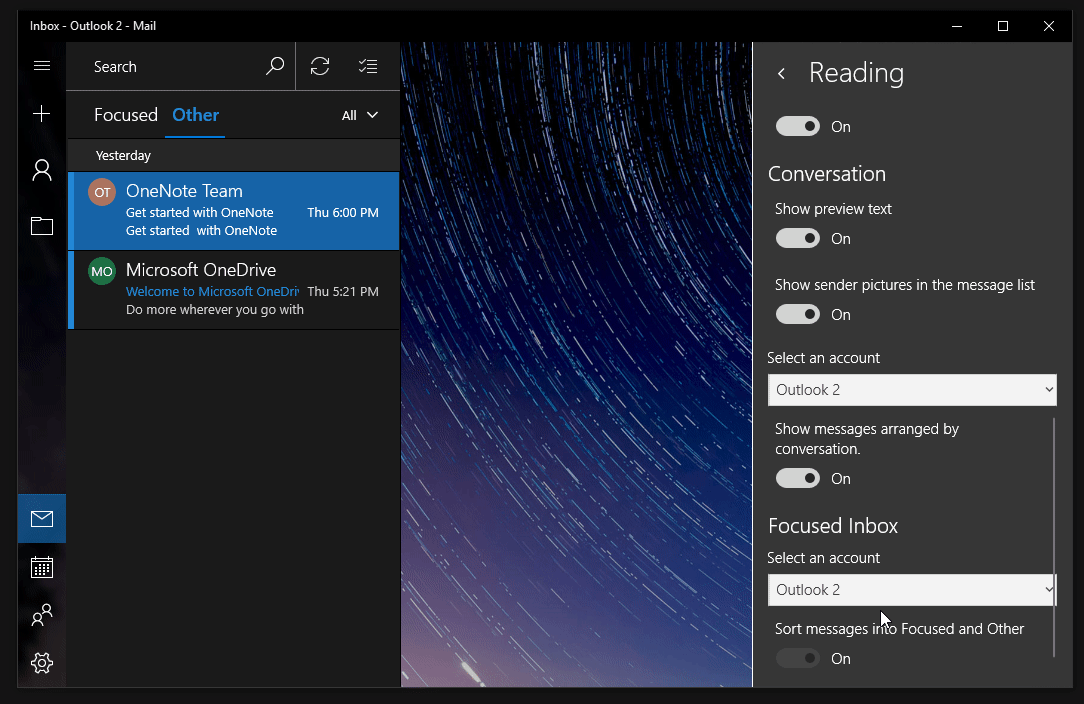Mail client sender icons
Why do email clients (for example, Windows Mail) display icons (sender pictures) from several companies?

As you can see, Microsoft, Tubmlr, Paypal provide pictures, as well as Go Daddy, Amazon, Github, Quora, Medium, Meetup and others; however, the majority of business senders have no sender pictures.
How are sender pictures are implemented?
What I've tried already:
Let's pretend, I own [email protected]
- Added [email protected] to Gravatar and uploaded custom icon.
- Created Google Account for [email protected] and changed account picture.
- Added favicon.ico to example.com
- Added webmanifest with multiple icon sizes to example.com
- Tried multiple link tags in / of example.com
- Configured DNS server to include all required records (SPF/TXT/DMARC/DKIM) for BIMI.
No luck yet. Are they hard-coded in email client? That would be strange, because why Quora is hard-coded in, while Yahoo is not, so I may reject this theory.
I have also noticed, that sender picture depends on the full email address: there is a picture in email from [email protected], but there is not a picture in email from [email protected] .
How it is done from the sender side? What did these companies do to enable their senders' pictures to display automatically?
PS. Question moved from https://stackoverflow.com/q/58328274/106715
Update 1: The same sender pictures are displayed in Windows Mail and the Office web app.
Update 2: I've started to think that these companies created accounts on all biggest email providers like Google and Microsoft with the same email addresses. I have tested that by creating [email protected] as a brand account on Google, and all recipients using Gmail, started seeing my sender picture. There may be a similar story with Microsoft Mail/Outlook.
Solution 1:
The use of "favicons" in a mail client is totally up to your email client. I know in Mozilla Thunderbird, at least five years ago, there was an add-on to do what you want to do; the add-on was basically set up to "hard-code" an image to use for a particular email address; IE: If the from: address was [email protected] the add-in would use a GMail icon in the inbox list.
So, if you have your own domain bogus.example.com, and there are maybe 20 people with email addresses for your domain, unlikely most mail clients would figure out to go get https://bogus.example.com/favicon.ico and use it.
Solution 2:
Favicons by sender
It is possible for a sender to include in HTML emails its own favicon to be displayed by the receiving email client.
This is achieved by including an HTML tag in the header of the email, similar to:
<link rel="shortcut Icon" type="image/x-icon" href="http://www.yourdomain.com/favicon-image.png" />
Not all email clients support this option, as there exist opinions against its use.
References:
- Using a Favicon in Email Campaigns
- rel="shortcut icon" considered harmful
- HTML
<head>Tag
Windows Mail app
Here these are not icons but only generated "helpful" visual aids. Microsoft has decided to add these to its Mail app in 2017 for visually indicating the source of the email, a feature that existed already in its products on Android.
If the email came from one of your contacts which had an avatar image, this image was displayed. For contacts with no avatars, they got new colorful round icons with their initials highlighted.
While it does make the app prettier overall and allows one to parse emails slightly faster, there were concerns by some users that the avatars disrupt the user interface. After over 3,000 users signed a petition demanding to remove them, Microsoft quietly added an option for turning them off.
For example, in the Outlook app this option is called "Show sender pictures in the message list" and is found in the "Reading" section of Options.
References:
Microsoft updates Outlook Mail for Insiders with colourful contact icons
Microsoft quietly adds option to turn off Sender Pictures in Windows 10 Outlook Mail app
You can now turn off colourful contact icons or profile pictures on the Outlook Mail app in Windows 10
